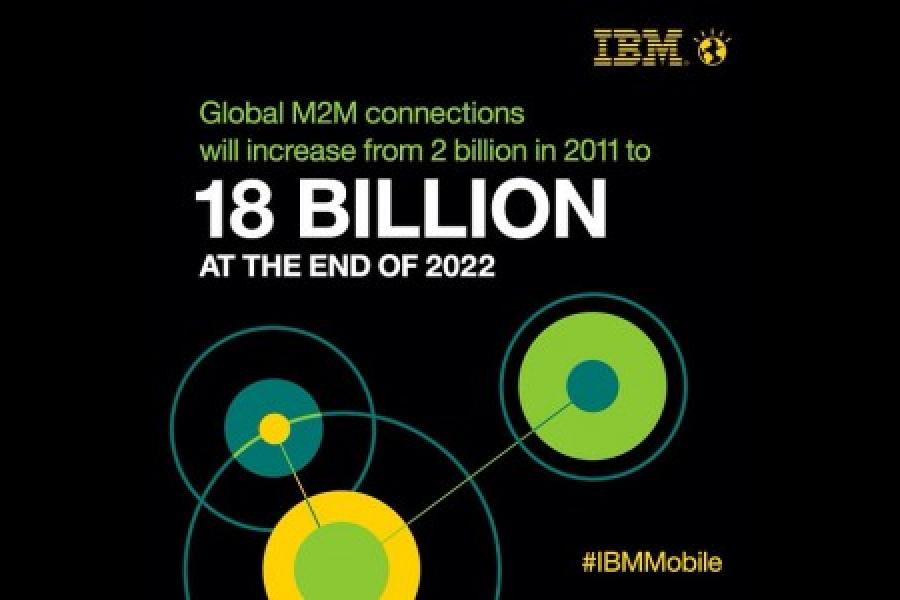Machine-to-Machine Service: Is it a Necessary Evil?
Imagine a refrigerator which has an iPad kind of panel, where you can check in every food item before you put it inside, along with its expiry date. And then you get alerts on your iPhone when that food item is close to expiry. As a working woman, I would love this kind of technology as it would reduce left-overs reaching the trash can and give me a guilt free night for reducing wastage.
This is a technology I saw at the Mobile World Congress in Barcelona in February this year where several companies demonstrate a plethora of machine to machine (M2M) solutions and technologies.
According to TM forum, a global, non-profit industry association focused on enabling service provider agility and innovation, “The machine to machine (M2M) market is a growing opportunity for service providers, offering massive potential as it drives connectivity to an ‘Internet of Things’. While M2M in true sense may give more information to the consumers, it may actually leave the service providers clueless. The service provider could be a telecom carrier or any enterprise providing M2M services. Imagine millions of events related to vehicle tracking devices, GPS devices, smart meters and light sensors being received and transmitted to consumers for their consumption. But it is very easy to lose management and control with so many events and alerts. The situation worsens when the number of services offered increase manifold leaving the service provider with an information glut, which further confuses them. Each time a device on the field fails and a support engineer is sent to repair it, the cost per consumer increases. In this situation, the need to keep the cost of operations extremely low in effect turns out to be very high.
Another perspective is to look at it from the monetization of the services. If the service providers have a glut of events staring in their faces, are they really able to monetize this data? Say, for instance, can a telecom company charge a consumer for 500 energy events per month and charge differentially for 50 alerts, which relate to power voltage spikes and yet differentially for the trend of spikes over a period of one month?
It is easy to deploy devices to making M2M happen today, but the challenge is to manage and control the entire ecosystem on which it is set up. M2M ecosystem will have millions of devices, which means billions of events and hence the ability to coherently decipher the events and route them to the correct service is not an easy task.
Therefore, to easily manage and provide control, a service provider needs a single console, which would give a consolidated view of events across M2M services, alerts for failures and reports for trend analysis over a period of time. Better manageability means creating better value to customers, if certain workflows can be triggered. More control means that events triggered from one device can serve as input to other devices based on rules and correlations. This is true especially for participative and adaptive devices like a camera installed at a traffic signal. When a traffic jam happens, a signal can be sent to the red light to reduce its time duration to ensure smooth flow of traffic. This can also help in traffic prediction in some of our congested sites.
Better manageability and control means a cockpit kind of application, which gives a bird’s eye view into all M2M activities. If required, you can zoom in and zoom out on the events you want to keep a close watch on. Service providers today need this cockpit application, also called M2M Services Operations Center, which can give them a single view on all M2M artifacts and activities. This will remove nightmares about which service is failing when, and who should be contacted or what action should be taken at the point of failure.
Connecting people, and now things, we have often heard that life is only getting busier, shorter and we become too dependent on machines. Then, why do we need more of this interconnected machines syndrome? Do interconnected machines kill our creativity, our ingenuity and leave us exasperated from an overdose? Many of us wonder whether life was simpler without excessive interconnection, and however glamorous the applications on our phones sound they do take away the sheer pleasure of ignorance. These are some thoughts I ponder, even while thinking about how to make M2M better and more profitable in the market. It’s a cul-de-sac, wherein only more knowledge opens the door…so connect things and bring in more information as you open the refrigerator door!!!
By Shalini Kapoor, Chief Architect for M2M development at IBM India SWG Labs.
(The postings on this site are my own and don't necessarily represent IBM's positions, strategies or opinions.)
The thoughts and opinions shared here are of the author.
Check out our end of season subscription discounts with a Moneycontrol pro subscription absolutely free. Use code EOSO2021. Click here for details.
